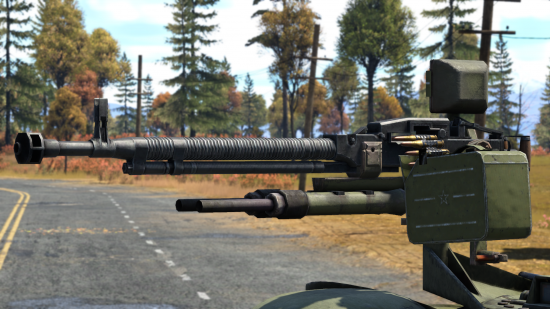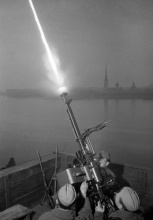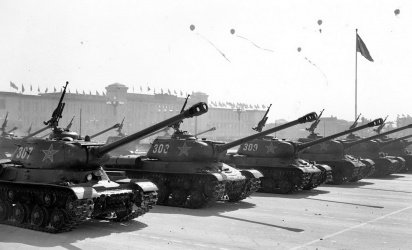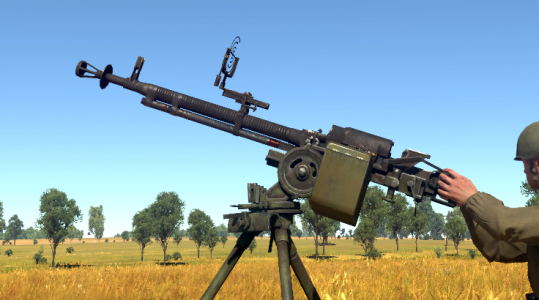Difference between revisions of "DShK (12.7 mm)"
(→Available ammunition) |
Jareel_Skaj (talk | contribs) (Added Pr.253L) |
||
| (10 intermediate revisions by 4 users not shown) | |||
| Line 13: | Line 13: | ||
{{Navigation-First-Line|'''Ground vehicles'''}} | {{Navigation-First-Line|'''Ground vehicles'''}} | ||
| − | + | {{Navigation-Line|Medium tanks}}{{Specs-Link|ussr_t_44_100}}{{-}}{{Specs-Link|ussr_t_54_1947}}{{-}}{{Specs-Link|ussr_t_54_1949}}{{-}}{{Specs-Link|ussr_t_54_1951}}{{-}}{{Specs-Link|sw_t_54_1951}}{{-}}{{Specs-Link|ussr_t_55a}}{{-}}{{Specs-Link|ussr_t_55_am}}{{-}}{{Specs-Link|ussr_t_55_amd_1}}{{-}}{{Specs-Link|ussr_to_55}}{{-}}{{Specs-Link|ussr_t_62m1}} | |
| − | |||
| − | {{Navigation-Line|Medium tanks}}{{Specs-Link|ussr_t_44_100}} | ||
| − | |||
| − | {{ | ||
{{Navigation-Line|Heavy tanks}}{{Specs-Link|ussr_is_2_1944}}{{-}}{{Specs-Link|ussr_is_2_1944_revenge}}{{-}}{{Specs-Link|ussr_is_2_1944_321}}{{-}}{{Specs-Link|cn_is_2_1944}}{{-}}{{Specs-Link|ussr_is_3}}{{-}}{{Specs-Link|ussr_is_4m}}{{-}}{{Specs-Link|ussr_is_6}}{{-}}{{Specs-Link|ussr_t_10a}} | {{Navigation-Line|Heavy tanks}}{{Specs-Link|ussr_is_2_1944}}{{-}}{{Specs-Link|ussr_is_2_1944_revenge}}{{-}}{{Specs-Link|ussr_is_2_1944_321}}{{-}}{{Specs-Link|cn_is_2_1944}}{{-}}{{Specs-Link|ussr_is_3}}{{-}}{{Specs-Link|ussr_is_4m}}{{-}}{{Specs-Link|ussr_is_6}}{{-}}{{Specs-Link|ussr_t_10a}} | ||
| Line 26: | Line 22: | ||
{{Navigation-First-Line|'''Naval vessels'''}} | {{Navigation-First-Line|'''Naval vessels'''}} | ||
| − | {{Navigation-Line|Motor gun boats}}{{Specs-Link| | + | {{Navigation-Line|Motor gun boats}}{{Specs-Link|ussr_mo_4}}{{-}}{{Specs-Link|ussr_pr253l}}{{-}}{{Specs-Link|ussr_od_200}}{{-}}{{Specs-Link|ussr_g5_rct}}{{-}}{{Specs-Link|ussr_ya_5m}} |
{{Navigation-Line|Motor torpedo boats}}{{Specs-Link|ussr_d3}}{{-}}{{Specs-Link|ussr_g5_mtb}}{{-}}{{Specs-Link|ussr_pr_123bis}} | {{Navigation-Line|Motor torpedo boats}}{{Specs-Link|ussr_d3}}{{-}}{{Specs-Link|ussr_g5_mtb}}{{-}}{{Specs-Link|ussr_pr_123bis}} | ||
| Line 36: | Line 32: | ||
{{Navigation-Line|Sub-chasers}}{{Specs-Link|ussr_mpk_163}}{{-}}{{Specs-Link|ussr_mpk_122bis}}{{-}}{{Specs-Link|ussr_mpk_122a}} | {{Navigation-Line|Sub-chasers}}{{Specs-Link|ussr_mpk_163}}{{-}}{{Specs-Link|ussr_mpk_122bis}}{{-}}{{Specs-Link|ussr_mpk_122a}} | ||
| − | {{Navigation-Line|Destroyers}}{{Specs-Link|ussr_destroyer_frunze}}{{-}}{{Specs-Link|ussr_destroyer_leningrad}}{{-}}{{Specs-Link|ussr_destroyer_moskva}}{{-}}{{Specs-Link| | + | {{Navigation-Line|Destroyers}}{{Specs-Link|ussr_destroyer_7_besposhchadny}}{{-}}{{Specs-Link|ussr_destroyer_frunze}}{{-}}{{Specs-Link|ussr_destroyer_leningrad}}{{-}}{{Specs-Link|ussr_destroyer_moskva}}{{-}}{{Specs-Link|ussr_destroyer_pr30_ognevoy}}{{-}}{{Specs-Link|ussr_destroyer_pr45}}{{-}}{{Specs-Link|ussr_destroyer_7_ryany}}{{-}}{{Specs-Link|ussr_destroyer_7y}}{{-}}{{Specs-Link|ussr_destroyer_7y_stroyny}}{{-}}{{Specs-Link|ussr_destroyer_pr20_tashkent}} |
{{Navigation-Line|Light cruisers}}{{Specs-Link|ussr_cruiser_kirov}}{{-}}{{Specs-Link|ussr_cruiser_krasnyi_kavkaz}}{{-}}{{Specs-Link|ussr_cruiser_krasnyi_krim}}{{-}}{{Specs-Link|ussr_cruiser_maxim_gorky}}{{-}}{{Specs-Link|ussr_cruiser_voroshilov}} | {{Navigation-Line|Light cruisers}}{{Specs-Link|ussr_cruiser_kirov}}{{-}}{{Specs-Link|ussr_cruiser_krasnyi_kavkaz}}{{-}}{{Specs-Link|ussr_cruiser_krasnyi_krim}}{{-}}{{Specs-Link|ussr_cruiser_maxim_gorky}}{{-}}{{Specs-Link|ussr_cruiser_voroshilov}} | ||
| − | {{Navigation-Line|Battleships}}{{Specs-Link|ussr_battleship_parizhskaya_kommuna}} | + | {{Navigation-Line|Battleships}}{{Specs-Link|ussr_battleship_marat}}{{-}}{{Specs-Link|ussr_battleship_parizhskaya_kommuna}} |
{{Navigation-End}} | {{Navigation-End}} | ||
| Line 63: | Line 59: | ||
* '''API-T:''' {{Annotation|API-T|Armour-piercing incendiary tracer}}{{-}}{{Annotation|API-T|Armour-piercing incendiary tracer}}{{-}}{{Annotation|AP-I(c)|Armour-piercing incendiary (cermet core)}} - The API-T belt on the other hand, while sharing the same bullet types as the API and AP belts, has an inverted bullet than that of AP: 2/3 API-T and 1/3 AP-I(c) - While such belt composition is better suited to engage air vehicles, the inclusion of AP-I(c) allows the player to easily defend themselves against enemy tanks. | * '''API-T:''' {{Annotation|API-T|Armour-piercing incendiary tracer}}{{-}}{{Annotation|API-T|Armour-piercing incendiary tracer}}{{-}}{{Annotation|AP-I(c)|Armour-piercing incendiary (cermet core)}} - The API-T belt on the other hand, while sharing the same bullet types as the API and AP belts, has an inverted bullet than that of AP: 2/3 API-T and 1/3 AP-I(c) - While such belt composition is better suited to engage air vehicles, the inclusion of AP-I(c) allows the player to easily defend themselves against enemy tanks. | ||
| − | { | + | {{:{{PAGENAME}}/Ammunition|AP-I, T, IAI, API-T, AP-I(c)}} |
| − | |||
| − | |- | ||
| − | |||
| − | |||
| − | |||
| − | |||
| − | |||
| − | |||
| − | |||
| − | |||
| − | |||
| − | |||
| − | |||
| − | |||
| − | |||
| − | |||
; Naval vessels | ; Naval vessels | ||
| Line 87: | Line 67: | ||
* '''12.7 mm APIT belts:''' {{Annotation|API-T|Armour-piercing incendiary tracer}}{{-}}{{Annotation|AP-I|Armour-piercing incendiary}}{{-}}{{Annotation|IAI|Immediate-action incendiary}}{{-}}{{Annotation|AP-I|Armour-piercing incendiary}} | * '''12.7 mm APIT belts:''' {{Annotation|API-T|Armour-piercing incendiary tracer}}{{-}}{{Annotation|AP-I|Armour-piercing incendiary}}{{-}}{{Annotation|IAI|Immediate-action incendiary}}{{-}}{{Annotation|AP-I|Armour-piercing incendiary}} | ||
| − | { | + | {{:{{PAGENAME}}/Ammunition|AP-I naval, API-T naval, IAI naval}} |
| − | |||
| − | |- | ||
| − | |||
| − | |||
| − | |||
| − | |||
| − | |||
| − | |||
| − | |||
| − | |||
| − | |||
| − | |||
| − | |||
| − | |||
=== Comparison with analogues === | === Comparison with analogues === | ||
| Line 159: | Line 125: | ||
== External links == | == External links == | ||
| − | <!--''Paste links to sources and external resources, such as:'' | + | <!-- ''Paste links to sources and external resources, such as:'' |
* ''topic on the official game forum;'' | * ''topic on the official game forum;'' | ||
| − | * ''other literature.''--> | + | * ''other literature.'' --> |
=== References === | === References === | ||
Latest revision as of 11:14, 21 November 2024
Contents
Description
The DShK or Degtyaryova-Shpagina Krupnokaliberny(Russian: Дегтярёва-Шпагина Крупнокалиберный; English: Degtyaryov-Shpagin Large Calibre) is an improved version of the DK (12.7 mm). Georgi Shpagin improved the cartridge feeding mechanism on the large calibre machine gun originally designed by Vasily Degtyaryov.
Vehicles equipped with this weapon
| Vehicles equipped with this weapon | |
|---|---|
| Ground vehicles | |
| Medium tanks | T-44-100 · T-54 (1947) · T-54 (1949) · T-54 (1951) · ▄T-54 · T-55A · T-55AM-1 · T-55AMD-1 · TO-55 · T-62M-1 |
| Heavy tanks | IS-2 (1944) · IS-2 "Revenge" · IS-2 No.321 · ␗IS-2 (1944) · IS-3 · IS-4M · IS-6 · T-10A |
| Tank destroyers | ISU-122 · ␗ISU-122 · ISU-122S · ISU-152 · ␗ISU-152 |
| SPAA | GAZ-AAA (DShK) |
| Naval vessels | |
| Motor gun boats | MO-4 · Pr.253L · OD-200 · TKA-412 · Ya-5M |
| Motor torpedo boats | D-3 · G-5 · Pr.123-bis |
| Gunboats | Groza |
| Armoured gun boats | BMO · MBK-161 early · MBK-161 late · MBK pr.186 · MBK pr.186 (MK 85) · Pr.191 · Pr.1124 early · Pr.1124 late · Pr.1124 MLRS |
| Sub-chasers | MPK-163 · MPK Pr.122bis · MPK pr.122A |
| Destroyers | Besposhchadny · Frunze · Leningrad · Moskva · Ognevoy · Opytny · Ryany · Soobrazitelny · Stroyny · Tashkent |
| Light cruisers | Kirov · Krasny Kavkaz · Krasny Krym · Maxim Gorky · Voroshilov |
| Battleships | Marat · Parizhskaya Kommuna |
General info
The gun itself weighs 34 kg and has a length of 1.625 m; firing 600 12.7x108 mm bullets per minute, each travelling at 850 m/s.
Available ammunition
- Ground vehicles
Tanks with the DShK as a secondary weapon only have access to one belt:
- Default: API-T · IAI · API-T · AP-I(c)
The GAZ-AAA (DShK) uses the DShK as its primary armament, and gains access to a set of different belt compositions:
- Default: AP-I · T · IAI - The belt consists of 3 different type of ammunition. AP-I ammunition is useful to put enemy planes on fire. T helps lead your shots while the IAI can be useful against less armoured aircraft. The lack of AP-I(c) found on other belts limits its effectiveness against ground targets, reducing it to mostly vehicles with exposed crew.
- API: AP-I(c) · API-T · AP-I(c) · API-T - Unlike the default belt, the API belt consists of 2 types of bullets. AP-I(c) can penetrate most opponents frontally due to how unarmoured vehicles are at such Battle Rating. API-T on the other hand, sacrifices penetration in favour of having an incendiary and a tracer component. This can prove to be very useful when engaging enemy aircraft as it can easily set them on fire. The belt's composition of 50% AP-I(c) and 50% API-T allows the vehicle to engage air vehicles as effectively as ground ones.
- AP: AP-I(c) · AP-I(c) · API-T - While the AP belt shares the same bullet types as the API and API-T belts, the bullet ratio of 2/3 AP-I(c) and 1/3 API-T is better suited to engage ground vehicles. That said the belt's API-T gives it enough flexibility to engage air targets.
- API-T: API-T · API-T · AP-I(c) - The API-T belt on the other hand, while sharing the same bullet types as the API and AP belts, has an inverted bullet than that of AP: 2/3 API-T and 1/3 AP-I(c) - While such belt composition is better suited to engage air vehicles, the inclusion of AP-I(c) allows the player to easily defend themselves against enemy tanks.
| Penetration statistics | |||||||
|---|---|---|---|---|---|---|---|
| Ammunition | Penetration @ 0° Angle of Attack (mm) | ||||||
| 10 m | 100 m | 500 m | 1,000 m | 1,500 m | 2,000 m | ||
| AP-I | 29 | 27 | 20 | 14 | 9 | 6 | |
| T | 10 | 8 | 7 | 6 | 0 | 0 | |
| IAI | 3 | 3 | 3 | 3 | 2 | 2 | |
| API-T | 29 | 27 | 20 | 13 | 9 | 6 | |
| AP-I(c) | 34 | 32 | 24 | 17 | 12 | 8 | |
| Shell details | ||||||||||||
|---|---|---|---|---|---|---|---|---|---|---|---|---|
| Ammunition | Velocity (m/s) |
Projectile mass (kg) |
Fuse delay (m) |
Fuse sensitivity (mm) |
Explosive mass (TNT equivalent) (g) |
Ricochet | ||||||
| 0% | 50% | 100% | ||||||||||
| AP-I | 820 | 0.05 | - | - | - | 47° | 56° | 65° | ||||
| T | 865 | 0.04 | - | - | - | 47° | 56° | 65° | ||||
| IAI | 860 | 0.04 | 0 | 0.25 | 3.23 | 47° | 56° | 65° | ||||
| API-T | 865 | 0.05 | - | - | - | 47° | 56° | 65° | ||||
| AP-I(c) | 850 | 0.05 | - | - | - | 47° | 56° | 65° | ||||
- Naval vessels
- Universal: AP-I · API-T · IAI
- 12.7 mm HE belts: IAI · IAI · IAI · API-T
- 12.7 mm APIT belts: API-T · AP-I · IAI · AP-I
| Penetration statistics | |||||||
|---|---|---|---|---|---|---|---|
| Ammunition | Penetration @ 0° Angle of Attack (mm) | ||||||
| 10 m | 100 m | 500 m | 1,000 m | 1,500 m | 2,000 m | ||
| AP-I | 30 | 29 | 25 | 21 | 18 | 15 | |
| API-T | 29 | 28 | 24 | 20 | 17 | 14 | |
| IAI | 3 | 2 | 2 | 2 | 2 | 2 | |
| Shell details | ||||||||||||
|---|---|---|---|---|---|---|---|---|---|---|---|---|
| Ammunition | Velocity (m/s) |
Projectile mass (kg) |
Fuse delay (m) |
Fuse sensitivity (mm) |
Explosive mass (TNT equivalent) (g) |
Ricochet | ||||||
| 0% | 50% | 100% | ||||||||||
| AP-I | 850 | 0.05 | - | - | - | 47° | 56° | 65° | ||||
| API-T | 850 | 0.05 | - | - | - | 47° | 56° | 65° | ||||
| IAI | 850 | 0.05 | 0 | 0.1 | 1.5 | 47° | 56° | 65° | ||||
Comparison with analogues
M2HB- American rival with a slightly shorter cartridge, having similar rate of fire while M2HB has slightly higher penetration and generally larger pools of ammunition at its disposal.
Usage in battles
The main purpose of the DShK was anti-aircraft in the first place, so it was seen in many forms ranging from a wheeled trolley up to mounting it onto tanks. Thanks to its large calibre at 12.7 mm, it can tear down light vehicles or strafing aircraft with relative ease and the rate of fire also helps this; it can also rip through enemies' tracks if necessary.
However, do keep in mind that it has a rather small ammo pool at only 50 rounds per belt/magazine, trigger-happy firing will make DShK run out of ammo very quickly.
Pros and cons
Pros:
- Decent rate of fire
- Quick traverse speed for an top-mounted machine gun
- Penetration is very similar to the M2 Browning, can take on many lightly armoured vehicles or SPAA
Cons:
- Low ammo count, will quickly run out if not properly managed
History
The Soviet Union's search for a suitable heavy machine gun for anti-armour and anti-aircraft purposes led to V.A. Degtyaryov developing the DK, or Degtyaryov Krupnokalibernyj (Degtyarov Large Calibre), in 1930 chambered in the new Soviet 12.7x108 mm cartridge. However, the initial design was hampered by its 30-round magazine capacity, restricting its capability to act as a machine gun. As such, the DK was discontinued by 1935. In 1937, another designer named Georgiy Shpagin developed a belt feed mechanism for the DK, which was fed from the left side only by a fixed, non-disintegrating metal belt for up to 50 rounds. By 1938, the weapon was submitted for firing trials and passed, with the weapon adopted in 1939 as the DShK mod. 1938. (DShK: Degtyarov – Shpagin Krupnokalibernyj, or "Degtyarov & Shpagin Large Calibre")[1][2]
The DShK served primarily as an emplaced heavy machine gun weapon, with special sights produced for anti-aircraft roles. The DShK was mounted on the Koleshnikov universal mount, which had a carriage allowing a wheeled configuration for transportation and firing at ground targets, or a tripod configuration using the carriage trails. In 1943, the DShK saw its first tank mount as the DShKT on top of the IS-2. The other prominent user of the DShK was the Soviet Navy, which used the DShK in a single (DShK, MTU-2), twin (DShKM-2, MSTU, DShKM-2B, 2-UK, 2M-1), or quadruple mount (DShKM-4) on torpedo boats, patrol boats, and destroyers.[1][3]
Production figures for the DShK was low prior to the Soviet's involvement of World War II. Pre-war figures have the DShK only begin delivering in 1940, making up a small part of the total 2,000 large calibre machine guns in the Soviet Union's overall inventory (with 830 single-barrel DShK mountings in the Soviet Navy). In the beginning of 1942, the Red Army's inventory had only 720 DShKs. However, as the weapon's value and production ramps up, the Red Army had 5,218 DShKs in 1943, and then 8,442 DShK machine guns in 1944. The Soviet Navy received 5,164 DShKs throughout the war.[1]
After World War II, the DShK saw another improvement by designers K.I. Sokolov and Aleksandr Norov. The improvement took elements from the RP-46, with a new feed mechanism that allowed the loading of belts from the left or right side of the machine gun. The weapon was also simplified with the implementation of stamped sheet steel parts, design of a new belt that disintegrated in 10-round increment, and other improvements that improved reliability and reduced failure rate of the weapon. This modernized design accepted in 1946 as the DShKM 1938/46.[1] The DShKM is distinctive from the DShK with its flatter belt-feed unit on the receiver.
The DShK and its variants have seen widespread use beyond the Soviet Union, either as aid to allies or sold through the arms market.[2] Multiple license-produced variants and copies are produced of the weapon, such as the Chinese Type 54 and the Iranian MGD 12.7.[4]
Media
- Images
- Videos
See also
- DK (12.7 mm) - Preceding variant of the machine gun
External links
References
- Citations
- Bibliography
- DiGiulian, Tony and Vladimir Yakubov. "12.7 mm (0.5") Degtjarev DShK M38 Heavy Machine Gun." NavWeaps, 06 Feb. 2017, Website. Accessed on 05 Aug. 2021 (Archive).
- Koll, Christian. Soviet Cannon: A Comprehensive Study of Soviet Guns and Ammunition in Calibres 12.7mm to 57mm. Self-published, PDF, 2009.
- Popenker, Maxim. "DShK DShKM 12.7." Modern Firearms, Website. Accessed 05 Aug. 2021 (Archive).
- Small Arms Survey. "Weapons Identification Sheet - DShK (& close derivatives)." Small Arms Survey, PDF. Accessed 05 Aug. 2021 (Archive).
| USSR anti-aircraft guns | |
|---|---|
| 7.62 mm | Maxim's |
| 12.7 mm | DShK |
| 14.5 mm | KPVT |
| 23 mm | AZP-23 · ZU-23 |
| 25 mm | 72-K |
| 30 mm | 2A38 · ZK453 |
| 37 mm | 2A11 · 61-K · Sh-37 · Type 65 |
| 57 mm | S-68 |
| Tank machine guns | |
|---|---|
| USA | |
| 7.62 mm | M37 · M60D · M73 · M240 · M1919A4 · Mk.52 |
| 12.7 mm | FN M3P · M2HB · M80 · M85 |
| Germany | |
| 5.56 mm | MG4 |
| 7.62 mm | C6 · MG3A1 |
| 7.92 mm | MG13 Dreyse · MG34 · MG37(t) · MG42 |
| 12.7 mm | S.MG.50 |
| USSR | |
| 7.62 mm | DT · PKMB · PKT · PKTM · RP-46 · SGMT |
| 12.7 mm | DK · DShK · 6P49 · NSVT |
| 14.5 mm | KPVT |
| Britain | |
| 7.62 mm | Browning MG4 · L3A1 · L8A1 · L8A2 · L37A1 · L37A2 · L94A1 |
| 7.7 mm | Vickers |
| 7.92 mm | BESA |
| 12.7 mm | L21A1 |
| Japan | |
| 6.5 mm | Type 91 |
| 7.62 mm | Type 74 |
| 7.7 mm | Type 97 |
| 12.7 mm | Type 60 (B) |
| China | |
| 5.8 mm | QJT |
| 7.62 mm | Type 55 · Type 59 · Type 86 |
| 12.7 mm | QJC88A · Type 54 |
| 14.5 mm | QJG02 |
| Italy | |
| 7.62 mm | Beretta MG42/59 · FN MAG 60-40 |
| 8 mm | 34/40M · Breda Mod. 38 |
| 13.2 mm | Breda Model 31 |
| France | |
| 7.5 mm | AAT-52 · MAC 31 |
| 7.62 mm | A-A-F1N |
| 8 mm | Hotchkiss Mle 1914 |
| Sweden | |
| 6.5 mm | ksp m/14-29 |
| 7.62 mm | ksp 39 C · ksp 58 · ksp 94 |
| 8 mm | ksp m/36 · ksp m/39B |
| 12.7 mm | ksp 88 |
| Naval machine guns | |
|---|---|
| USA | |
| 7.62 mm | M73 |
| 12.7 mm | AN-M2 |
| Germany | |
| 7.62 mm | MG-3 |
| 7.92 mm | MG08 pattern 1908 · MG15 · MG34 |
| 13.2 mm | Hotchkiss |
| 15 mm | MG M38(t) |
| USSR | |
| 7.62 mm | Maxim |
| 12.7 mm | DShK |
| 14.5 mm | KPV |
| Britain | |
| 7.62 mm | FN MAG |
| 7.7 mm | Lewis 1916 · Vickers GO No.5 |
| 12.7 mm | Vickers Mk.V |
| Japan | |
| 6.5 mm | Maxim · Type 38 pattern 1907 |
| 7.7 mm | Type 89 · Type 92 |
| 13.2 mm | Type 93 |
| Italy | |
| 6.5 mm | Breda Mod.30 · Fiat Model 26 |
| 12.7 mm | Breda-SAFAT |
| 13.2 mm | Breda Model 31 |
| France | |
| 7.7 mm | Darne M1922 |
| 7.92 mm | Hotchkiss pattern 1914 |
| 13.2 mm | Browning · Model 1929 Hotchkiss |







